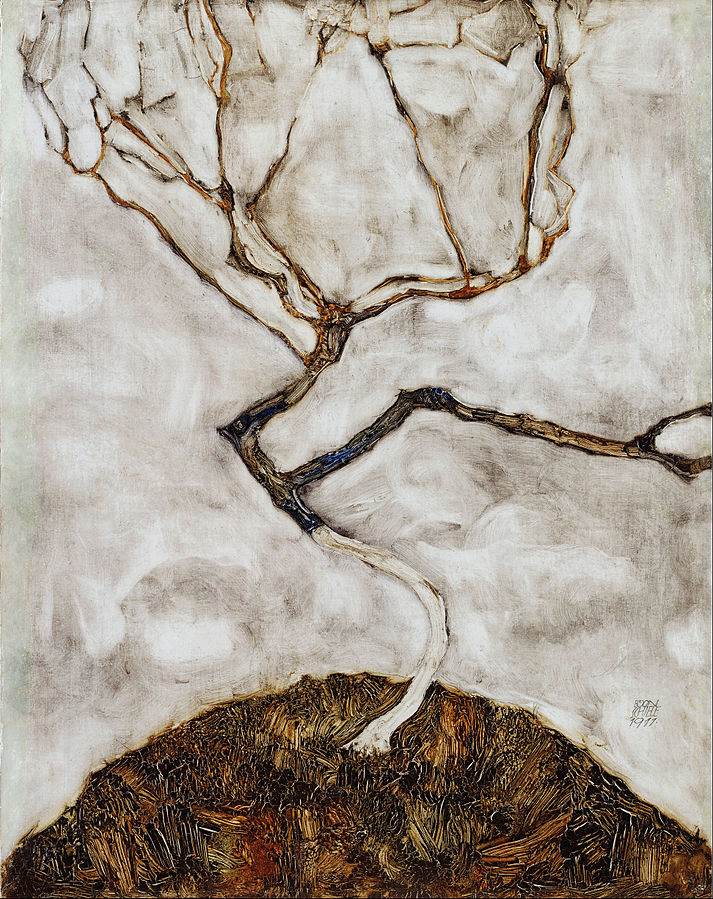
In his 1922 book, Schiele's mentor and collector Arthur Roessler offered some insightful information. In the chapter entitled "Der Hoffnungsfunke," or The Glimmer of Hope, the influential Viennese art writer and critic wrote that in 1911 the artist asked him to quickly sell five oil paintings on small wooden tablets. Previously, Roessler had recommended that Schiele paint smaller format pictures for easier sale. Small Tree in Late Autumn was one of these pieces.
As this painting of a bare tree on the top of a hill exposed to autumnal winds and weather exemplifies, Schiele often depicted nature as a reflection of psychological states. The trunk and the branch protruding to the right remind us of human legs, while the branches of the treetop resemble arms. We are left with the impression of a dancing figure, a solitary motif on a hill, waltzing against the wind, which seems to convey exposure, powerlessness - a new kind of "dance of death."
Portrait of Wally
The Embrace
Self-Portrait with Chinese Lantern Plant
The Bridge